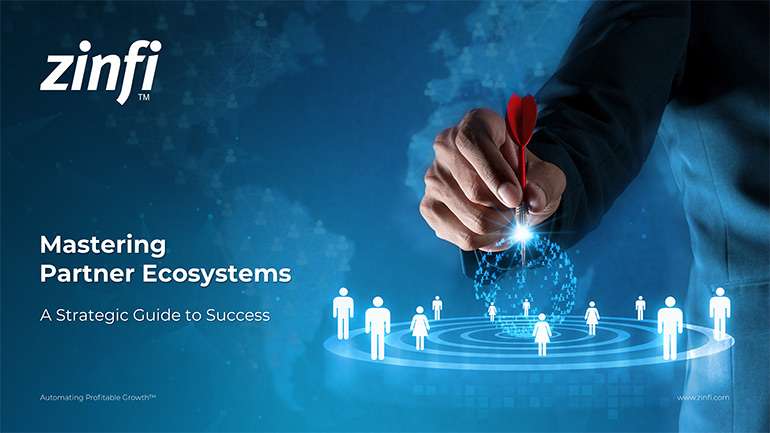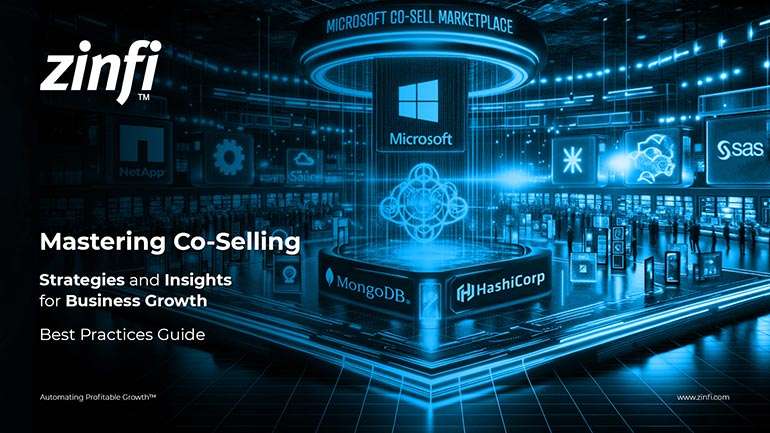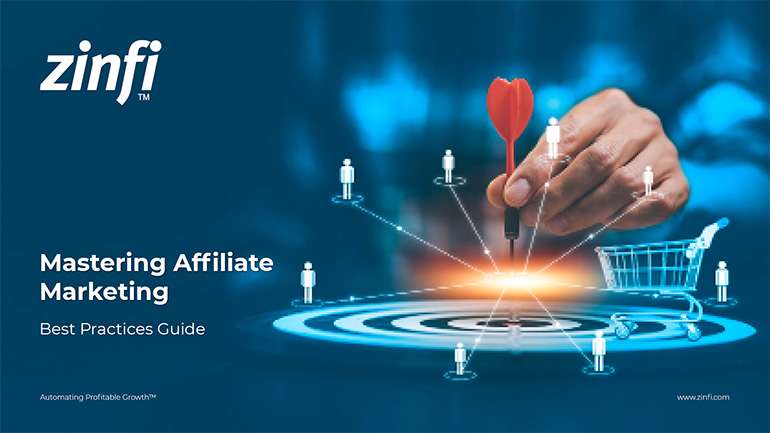Best Practices Articles

5 Cold Email Template Tricks That Get HOT Lead Returns
Email marketing is still a very effective method of lead generation, even though other methods like social engagement, content marketing through thought leadership and group dialoguing on networking sites are rapidly gaining momentum. The tried-and-true solution of email is still about as personal as you can get for a first-time touch. But this is not “spray and pray”…one template will not work for everyone! Not everyone likes pizza, so make sure you also have a hamburger or grilled cheese handy.
When developing a cold email template, keep in mind that you are often going to create a set of them—to be used for various audiences or approaches—in order to add some custom touches and answer important questions. Most marketing automation platforms and solutions these days have emailing tools that allow you to segment your mailing list and deliver different versions of your email marketing template(s) based on audience type. Here are 5 tips, in the form of questions that your recipient might ask themselves (and that you should anticipate!) when you create your cold email template(s):
1. Are you talking to me?Hang on, this is not Robert De Niro threatening you. No need to start fearing taxi drivers. What this question implies is that the recipient of your email might begin to read your email and wonder who you are talking to. Are you talking in third person, in a general “scripted” sort of way (like a generic, operational-type sales pitch), or are you actually speaking to your target reader in a personal and connected way? The best emails come across as conversational. Speak in first person, refer to yourself in a way that emphasizes your humanness, and talk about what needs or solutions might be personal to your audience. You can do this in a cold email template by personalizing the speech, using your marketing automation platform to insert the recipient’s name and job title, and customizing the email content to the recipient’s industry. One template won’t cover all titles in all industries; if you segment your mailing list by job title or industry, you can craft a handful of templates that will customize to your audience much more effectively.
2. Why should I care? The only reason someone would open your email is if the subject line speaks to their interest, and the only reason they would respond to the call-to-action (CTA) or engagement promoted in it is if they see it as a solution that provides them some sort of business value. Even if you offer a value pitch that may benefit recipients at some point in the future, the fact that you are in their mailbox means that they are currently looking at you from within an immediate and categorical reference point. People scan emails and always have their finger on the delete button. You have to speak powerfully, and you have to speak to the “right now.” You might have the best BAND-AIDs in the world that are waterproof up to 300 meters deep and will adhere even during a gorilla attack…but I have little use for them unless I have a cut at that exact moment. Yes, people do look for valuable products and services that they think they might need down the line, but at best they’ll make a note of items that come across their radar for later research when the need arises. If your cold email template does not speak to them right now, you lose the lion’s share of its potential power and urgency and often find yourself in the trash folder. 3. Am I taking a risk here?Okay, let’s say you got them to open and now they are actually reading your email. Bravo! Give this marketer a chocolate bar. At this point they have seen some value in what you are providing, but the next question that comes up is if it is worth the risk of going down the rabbit hole and beginning a conversation with you. What are the inherent benefits of your solution? How does that solution fit into the recipient’s current growth or revenue needs? What is the possible downside of engaging with you? To get them over this hump and land them into your lap, provide examples of results that you’ve achieved for other clients. Show them how your product is the solution they need, not by listing all the ground-breaking innovations of your feature set in bullet points, but rather by referring to use cases showing how current customers created growth in their business using your company’s offering. I am about to say a risky thing here: Your solution might not be the “best” in the market (after all, we live in a time of entrepreneurial competition), but it might be the best to solve the unique requirements of the prospect who is reading your email. Show the prospect what you’ve done for others, in a few lines only, and you might wind up speaking directly to their sensibilities.
4. Do I get a say in this?No one wants to be spoken TO, they want to converse WITH. Educate, don’t lecture. It is important that you phrase your messaging in your cold email template from a collaborative, teamwork point of view. “We work with your team….” “Under your advisement….” “Let our expert staff advise your team….”—these are some examples of positioning your message to make the reader feel like they are a part of the solution, not just a passive recipient. Customers will gravitate towards vendors they think will support their efforts and reflect back onto their team, not overshadow it. Also, make sure that your readers feel like they have a say in how and when they begin communicating with you. Ask them to reach out and let you know when would be the best date/time to have a quick chat about what you can provide. Leave the ball in their court. Don’t say you will call them soon or propose an exact appointment opportunity. On the other hand, be forthright in encouraging further conversation.
5. Can I respond easily?“Print out the attached map.” “Go to these GPS coordinates.” “Knock on the third orange door to the left.” ”Give us your Social Security number and do three minutes worth of Samba dancing to get my private mobile number.” Yeah, you’re right, these CTAs won’t motivate your prospect to get in touch with you. When putting together your cold email template, make sure to include a clear, easy, actionable method of communicating with you—perhaps a simple CTA that leads to a short form, or a direct desk number with an enticing invitation to call at their convenience. Also, many inside sales teams are now using links to apps that allow one-click calendar scheduling to book an appointment to chat. The easier and more convenient you make the process for someone to get back to you, the more likely it is they’ll reach out.
Cold email template concepting and design is a finicky art form and there are limitless subtleties that might make the difference between getting through with your message or going directly into the delete universe. Speak directly and personally to your reader, give them a value they can connect with, make them feel at ease, involve them in the decision to reach out and make it easy for them to do so. If you abide by these psychological considerations and put yourself in the shoes of your reader, you might find that your inbox is lighting up with responses. Remember, your email blast might be sent out by an automated system, but the content starts with a human being.
For more information on marketing automation or demand generation services, please visit us at ZINFI.com.
Best Practices Guidebook
 Winning with Partner Advisory Councils: Best Practices for Partner Engagement & Growth
Winning with Partner Advisory Councils: Best Practices for Partner Engagement & GrowthDownload Guide
 The Future of Partner Ecosystems Best Practices
The Future of Partner Ecosystems Best PracticesDownload Guide
 The AI Revolution: How Technology and Talent are Shaping the Future
The AI Revolution: How Technology and Talent are Shaping the FutureDownload Guide
 Top 105 Partner Management Metrics that Matter Best Practices
Top 105 Partner Management Metrics that Matter Best PracticesDownload Guide
 Mastering PRM Integration Best Practices
Mastering PRM Integration Best PracticesDownload Guide
 Building a Sales Partner Portal with Salesforce Best Practices
Building a Sales Partner Portal with Salesforce Best PracticesDownload Guide
 Building and Managing Partner Ecosystems Best Practices
Building and Managing Partner Ecosystems Best PracticesDownload Guide
 Mastering Co-Marketing and Co-Selling Best Practices
Mastering Co-Marketing and Co-Selling Best PracticesDownload Guide
 Transforming Partner Ecosystems Best Practices
Transforming Partner Ecosystems Best PracticesDownload Guide
 Mastering Partner Ecosystems Best Practices
Mastering Partner Ecosystems Best PracticesDownload Guide
 Mastering Partner Onboarding Best Practices
Mastering Partner Onboarding Best PracticesDownload Guide
 Partner Ecosystem Management Best Practices
Partner Ecosystem Management Best PracticesDownload Guide
 B2B Marketing in the Age of Intelligence Best Practices
B2B Marketing in the Age of Intelligence Best PracticesDownload Guide
 Multi-Partner Co-Selling Best Practices
Multi-Partner Co-Selling Best PracticesDownload Guide
 A Guide to Enhance Channel Sales Efficiency
A Guide to Enhance Channel Sales EfficiencyDownload Guide
 Mastering Affiliate Marketing Best Practices
Mastering Affiliate Marketing Best PracticesDownload Guide
 The Ultimate Guide to Channel Partner Management
The Ultimate Guide to Channel Partner ManagementDownload Guide
 Top 10 Trends in 2024 Partner Relationship Management
Top 10 Trends in 2024 Partner Relationship ManagementDownload Guide







